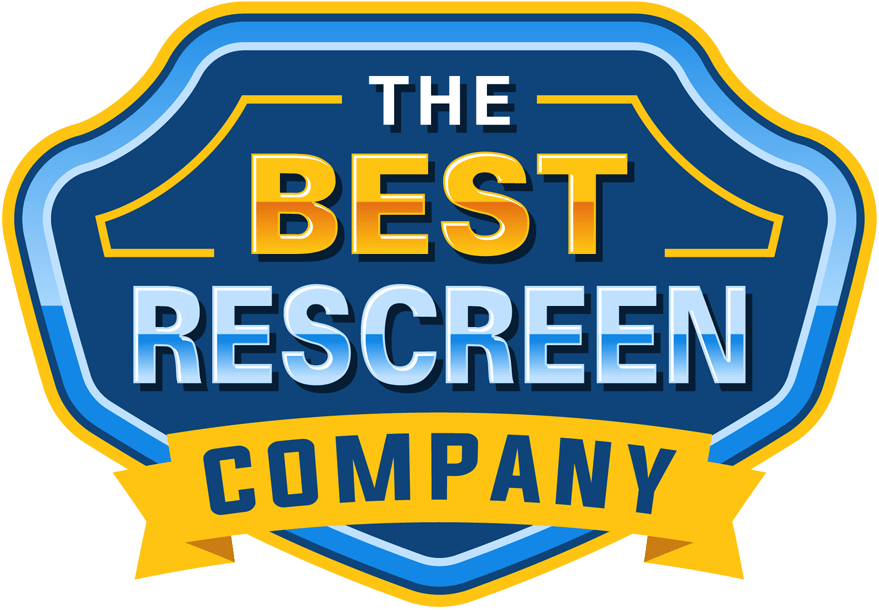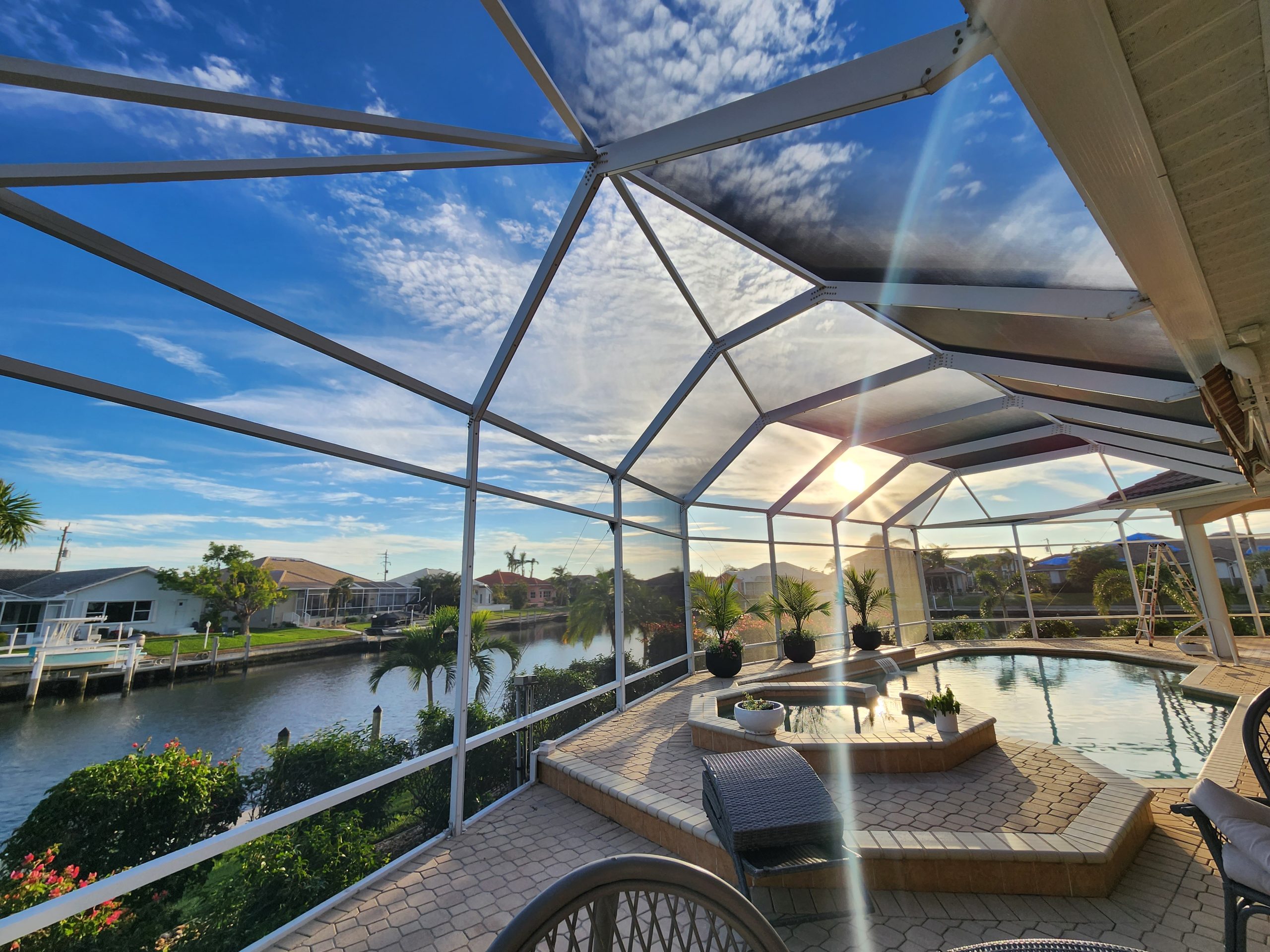Choosing the right screen material for your pool cage is crucial, especially in Florida, where the environment can be harsh on outdoor structures. The lifespan of your pool cage screens depends heavily on the material used. At Best Rescreen Company, located at 5660 Strand Ct Unit A244, Naples, FL 34110, we offer a variety of screen materials, each with its own unique characteristics and longevity. Understanding these differences can help you make an informed decision that ensures your pool cage remains functional and visually appealing for years to come.
1. Fiberglass Screens
Lifespan: 7-10 years
Overview: Fiberglass screens are one of the most common materials used for pool cages due to their affordability and flexibility. These screens are made from woven fiberglass mesh, coated with a protective layer to resist corrosion. They offer good visibility and allow air to flow freely, making them ideal for pool enclosures. However, fiberglass screens are prone to wear and tear over time, especially in areas with high winds or exposure to UV rays. Regular maintenance and timely repairs can help extend their lifespan.
Pros:
- Cost-effective
- Easy to install
- Good airflow and visibility
Cons:
- Prone to tears
- Less durable in harsh weather conditions
2. Super-Strength Polyester Screens
Lifespan: 10-15 years
Overview: Super-strength polyester screens are a more durable alternative to fiberglass. Made from thicker, stronger polyester fibers, these screens are designed to withstand heavy use and adverse weather conditions. They are resistant to tears, stretching, and sagging, making them ideal for homes with pets or active children. While they are more expensive than fiberglass, their extended lifespan and durability make them a cost-effective choice in the long run.
Pros:
- Highly durable and tear-resistant
- Long lifespan
- Suitable for high-traffic areas
Cons:
- Higher initial cost
- Less flexible, making installation slightly more challenging
3. Pet-Resistant Screens
Lifespan: 10-15 years
Overview: Pet-resistant screens are specifically designed for homeowners with pets that may scratch or push against the screens. These screens are made from a thicker, more robust material that can withstand the wear and tear caused by claws and rough play. In addition to their durability, pet-resistant screens also offer good visibility and airflow, making them a practical choice for many homeowners. Their longevity is similar to that of super-strength polyester screens, providing a long-term solution for pet owners.
Pros:
- Extra strength to resist pet damage
- Long-lasting
- Maintains good airflow
Cons:
- Higher cost compared to standard screens
- Slightly reduced visibility due to thicker material
4. Aluminum Screens
Lifespan: 10-20 years
Overview: Aluminum screens are known for their durability and resistance to corrosion, making them an excellent choice for coastal areas like Naples, FL. These screens are made from woven aluminum mesh, which is naturally rust-resistant and can withstand exposure to the elements. Aluminum screens are stronger than fiberglass, offering better protection against wind and debris. However, they are also more prone to dents and creases, which can affect their appearance over time.
Pros:
- Highly durable and rust-resistant
- Long lifespan
- Stronger than fiberglass
Cons:
- Susceptible to dents
- More expensive than fiberglass
5. Solar Screens
Lifespan: 10-15 years
Overview: Solar screens are designed to block a significant amount of the sun’s heat and UV rays, making them an excellent choice for pool cages in sunny climates. These screens can reduce the temperature within your pool enclosure, making it more comfortable during hot summer days. Solar screens are typically made from high-density mesh that is both durable and effective at shading. While they provide excellent sun protection, they can also slightly reduce visibility and airflow.
Pros:
- Excellent sun and UV protection
- Energy-efficient, reducing cooling costs
- Durable and long-lasting
Cons:
- Reduced visibility compared to standard screens
- Higher initial cost
6. No-See-Um Screens
Lifespan: 7-10 years
Overview: No-see-um screens are specifically designed to keep out the tiniest of insects, such as gnats and sandflies, which are common in Florida. These screens have a tighter weave than standard screens, providing superior insect protection. However, the tighter weave can also reduce airflow and visibility slightly. No-see-um screens are generally made from fiberglass or polyester, with a lifespan similar to that of regular fiberglass screens.
Pros:
- Superior insect protection
- Available in durable materials
Cons:
- Reduced airflow and visibility
- Lifespan similar to standard screens
The lifespan of your pool cage screens largely depends on the material you choose. Whether you prioritize durability, visibility, or insect protection, there’s a screen material that fits your needs. At Best Rescreen Company, we offer a range of high-quality screen options to ensure your pool cage remains in excellent condition for years to come. Located at 5660 Strand Ct Unit A244, Naples, FL 34110, our team of experts is ready to help you select the best screen material for your home. Contact us today to schedule a consultation and learn more about our rescreening services.

